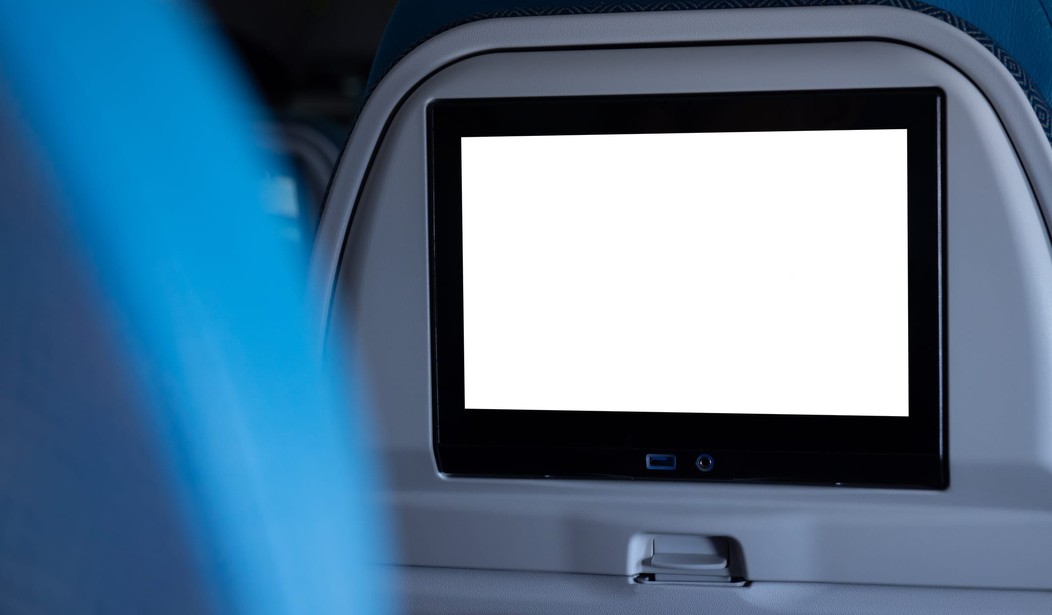Several airlines have admitted that their seatback entertainment screens come equipped with cameras, according to recent reports. Passengers, understandably, have been alarmed to discover the cameras staring at them during their flights.
One picture, taken by a passenger on Singapore Airlines, went viral, causing thousands of people to express concern about their privacy being invaded.
Just found this interesting sensor looking at me from the seat back on board of Singapore Airlines. Any expert opinion of whether this a camera? Perhaps @SingaporeAir could clarify how it is used? pic.twitter.com/vy0usqruZG
— Vitaly Kamluk (@vkamluk) February 17, 2019
Another passenger aboard an American Airlines Boeing 777-200 also noticed a camera on the seat staring back at him.
Sri Ray, aboard the American flight to Tokyo, wondered how the camera might be used in a malicious way, such as passengers being watched during the flight or someone hacking into the camera.
It turns out that many of the airlines’ entertainment systems, built around a tablet computer, come equipped with cameras built in. But, based on these two airlines’ responses, none of these cameras are active — at least not yet.
Ross Feinstein, a spokesperson for American Airlines, confirmed to BuzzFeed News that none of the cameras have been activated and the airline has no intention of using them. He explained that the cameras are a part of the entertainment systems that they buy, and they are there for possible future use, such as communicating with other passengers or using hand gestures for controlling the in-flight entertainment.
Singapore Airlines had a similar response, explaining that the touchscreens happened to come with a camera integrated into the design of their entertainment system. The airline said, “These cameras have been disabled on our aircraft, and there are no plans to develop any features using the cameras.”
It’s probably not a concern now, but you can imagine that there are engineers hard at work trying to figure out what they can do with the cameras, now that they’re installed. And there’s good reason to worry considering there are no laws that would prevent the airlines from spying on passengers or conducting a survey of how their passengers spend time at their seats. All it would take is for a marketing research company to offer to pay for the information and you can bet the airline would be attracted to another source of revenue. After all, how many more surcharges can the airlines find?
This revelation comes at the same time Google has had to apologize for putting microphones in its Nest security system, Nest Guard, without informing the owners. When did the owners find out? When Google announced that their alarm system was getting Google Assistant, their voice-activated bot. They simply could turn on the mic without the user’s permission
This is symptomatic of a continuing trend to capture everything we do or say. There’s just no concern for privacy any longer, no matter what we’re told. Of course, we’re always carrying a microphone and camera with us as part of our smartphone. But, what’s a concern here is that the airlines never thought adding a lens would be a problem. If they had, they would have just covered them up.
Cameras have become ubiquitous and it’s likely our image is captured dozens of times each day. According to National Geographic:
Today more than 2.5 trillion images are shared or stored on the Internet annually… 6.1 billion people will have phones with picture-taking capabilities. Meanwhile, in a single year an estimated 106 million new surveillance cameras are sold. More than three million ATMs around the planet stare back at their customers. Tens of thousands of cameras known as automatic number plate recognition devices, or ANPRs, hover over roadways. ..The untallied but growing number of people wearing body cameras now includes not just police but also hospital workers and others who aren’t law enforcement officers. Proliferating as well are personal monitoring devices—dash cams, cyclist helmet cameras to record collisions, doorbells equipped with lenses to catch package thieves—that are fast becoming a part of many a city dweller’s everyday arsenal. Even less quantifiable, but far more vexing, are the billions of images of unsuspecting citizens captured by facial-recognition technology and stored in law enforcement and private-sector databases over which our control is practically nonexistent.
Thus, worrying about a camera at your airplane seat might be futile considering your image is captured dozens of times between leaving your home and arriving at the airport.









Join the conversation as a VIP Member